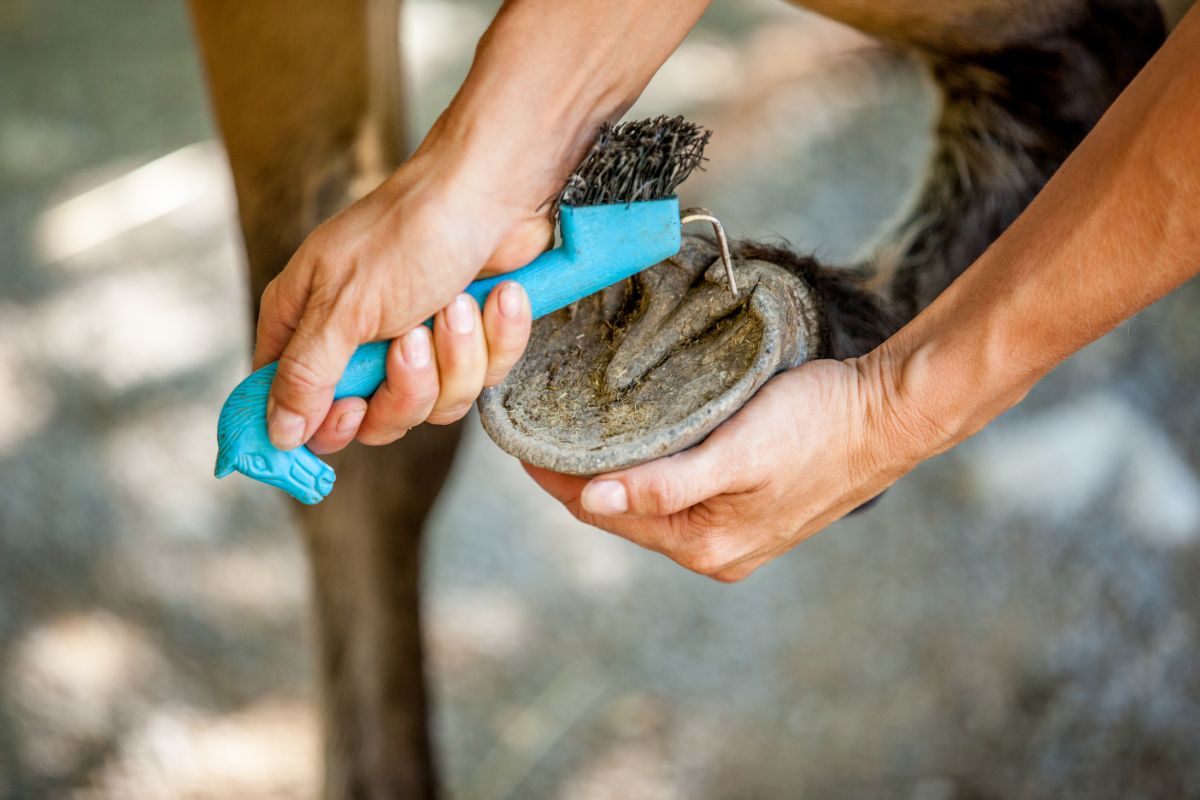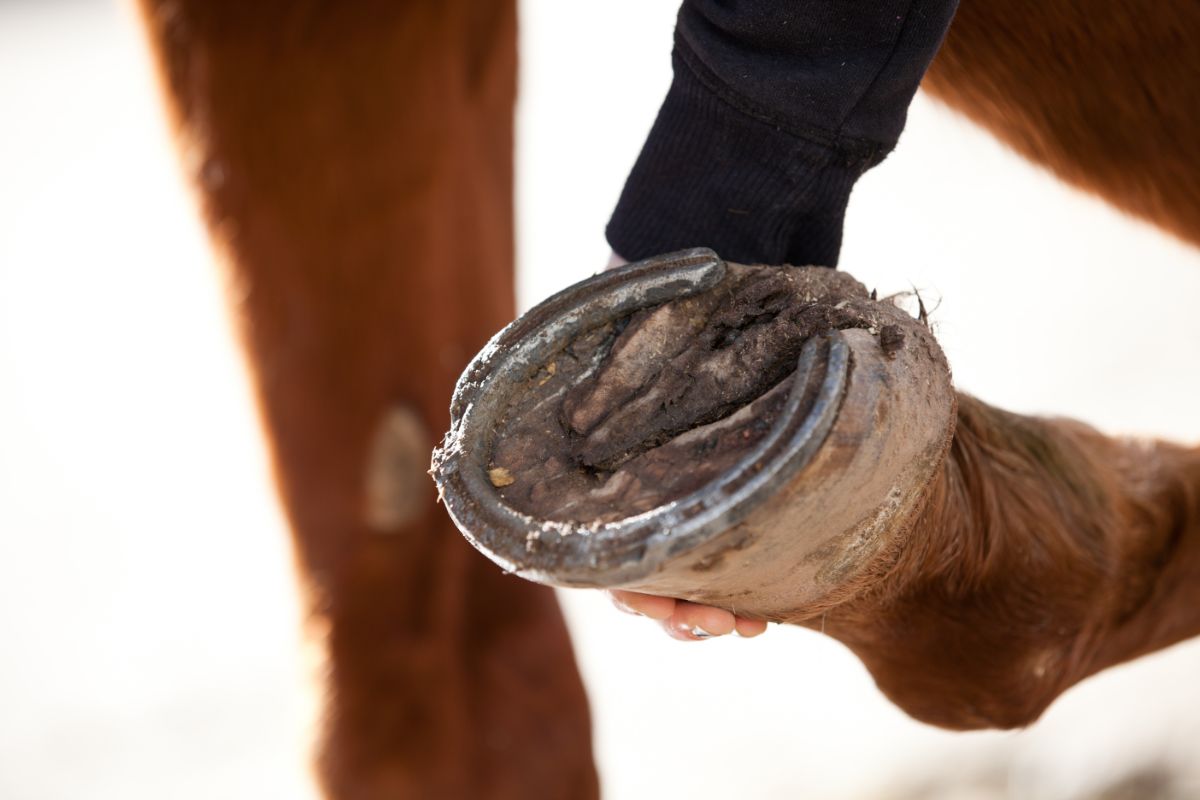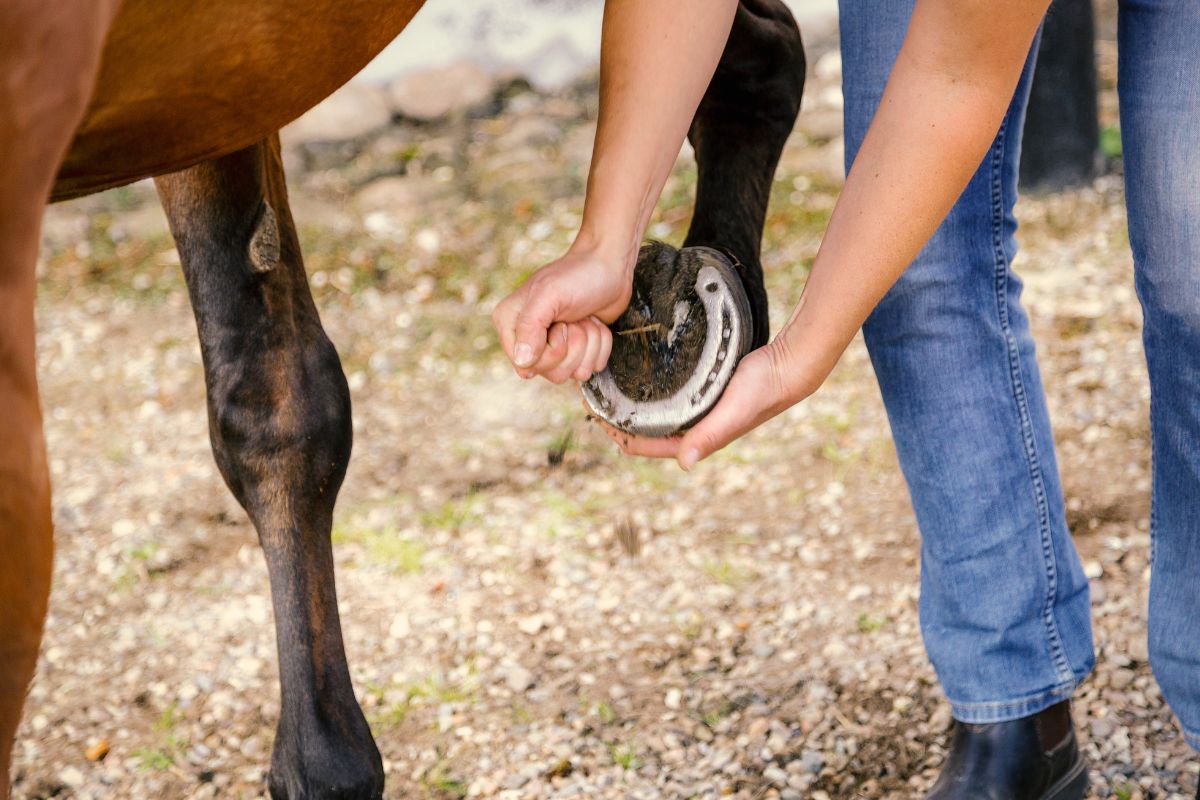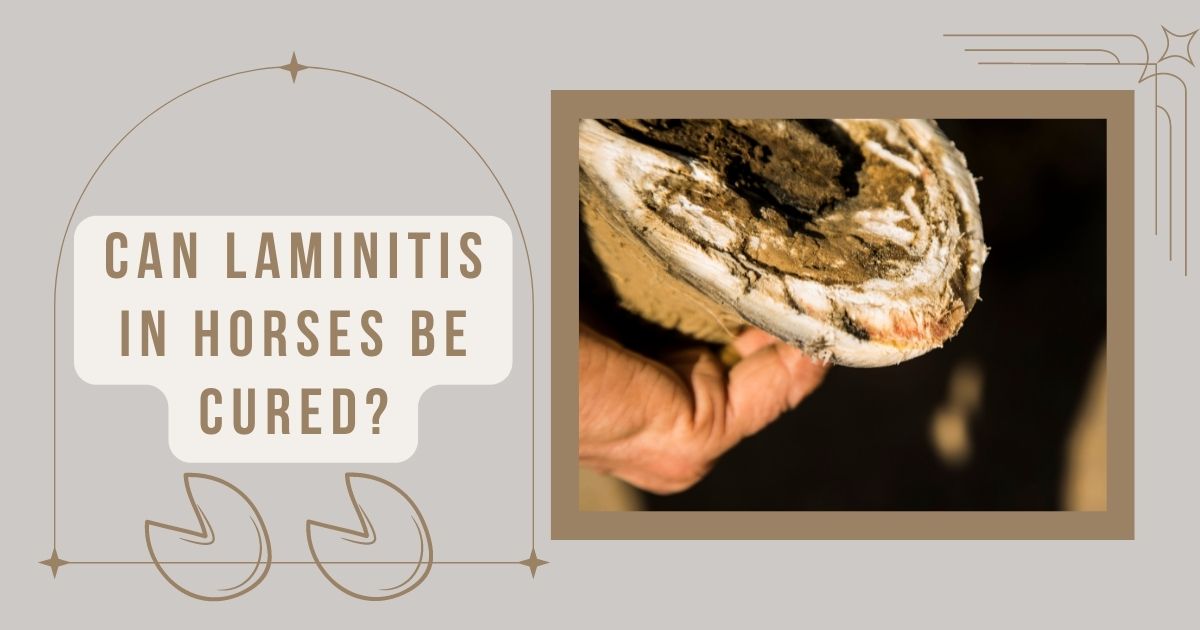What is Laminitis in Horses?
Laminitis in horses or “founders” is a multifactorial disease. It is an extremely painful disease characterized by degeneration, necrosis, and inflammation of the laminae of the hoof.
Equines have two types of laminae dermal and epidermal. These laminae play a critical role in holding the hoof wall onto the horse’s foot.

What Causes Laminitis in Horses?
First of all, let us realize what causes laminitis in horses. Knowing the cause behind the disease is key to preventing its occurrence and even possibly reversing it.
The main diseases associated with laminitis are those of
- Endocrine origin
- Supporting limb laminitis (excessive weight-bearing)
- Inflammatory diseases and sepsis, or endotoxemia.
Laminitis can often be seen as a sequela of digestive disturbances such as colitis and after colonic torsion.
Abrupt changes in feed, excessive intake of cold water after strenuous activities, and highly available carbohydrates can also play a detrimental role in the development of laminitis.
The nature of the disorder can be acute or chronic.
Symptoms of Laminitis in Horses
The symptoms of laminitis in acute and chronic forms differ slightly.
The clinical signs associated with acute laminitis in horses are lameness, anorexia, and reluctance to move.
Tapping on the hoof wall may elicit pain accompanied by increased pulsations which can be seen and felt in the digital arteries. The front limbs are more commonly and more severely affected.
Horses usually change their posture by drawing their hindlimbs under the body and placing the forelimbs forward to shift their weight to the hindlimbs, loading the heels rather than the toes.
The clinical signs associated with chronic laminitis in horses are lameness and abnormal conformation of the hoof (displacement of the distal phalanx), exercise intolerance, depression, and anorexia.
Bloody exudate can also be present, oozing from the abnormally-shaped hoof, and it may also feel warm to the touch.
The sole is either flat or dropped. The hoof wall shows signs of uneven growth. In more severe manifestations of the disorder, fissures running parallel to the coronary band may also be seen.
When laminitis has struck all four limbs, the horse will be unable to stand.
Diagnosing Equine Laminitis
For the diagnosis of equine laminitis, the first step to take is to provide the veterinarian with a detailed anamnesis. This will help primarily with understanding if the case is chronic or acute.
The posture of the horse and clinical signs must also be observed and noted.
The most important diagnostic tool is an X-ray and/or an MRI (magnetic resonance imaging). The displacement of the distal phalanx can be seen radiographically as early as the third day after the development of clinical signs.
The thickness of the hoof wall and sole allow veterinarians to determine whether distal displacement, rotation, or unilateral sinking has occurred. Distal displacement can be accompanied by rotation.
The following criteria characterize the five degrees of lameness :
Grade 1
In grade one, the horse will alternate feet at rest. At a trot, the horse’s stride is shorter, but when the walking stride is normal.
Grade 2
In grade two, the horse will walk willingly with a shortened gait. There is difficulty or hesitance when picking up a foot.
Grade 3
In grade three, the horse is very reluctant to move, and it is difficult to pick up a foot.
Grade 4
In grade four, the horse willingly stands but is hesitant to move.
Grade 5
Grade five is the most severe manifestation where the horse is unable to stand or move.

Reversing Laminitis in Horses
Treating and reversing laminitis in horses is no easy task. However, with the appropriate care, it is possible.
- If your horse is overweight, implementing a suitable weight-loss dietary plan will help achieve and maintain a healthy weight.
- Minimize exercise and any weight-bearing activities until the hoof has recovered and the gait and stride are normalized.
- To deal with ischemia and consequently improve blood flow to the foot, medications such as Phenylbutazone, Isoxuprine, Nitroglycerin, and Acepromazine will be prescribed by the veterinarian to help enhance vascular perfusion within the foot.
- Since laminitis is an extremely painful condition, analgesics must be used to relieve pain. Detomidine, Butorphanol, and Morphine are medications that can offer such relief.
- The use of ice baths to cool the foot is also another way of offering some temporary pain relief.
- Removal of horseshoes is advisable. Padding the affected hoof is desirable during this period.
- NSAIDs such as Flunixin Meglumine or Firocoxib help reduce inflammation.
- Mechanical support for the third phalanx is of utmost importance. Since the laminar bond no longer supports the weight of the limb, minimizing shearing forces between the third phalanx and the hoof wall is essential. This is typically accomplished by trimming the hoof wall to shift weight-bearing to the sole and frog.
Alfalfa Hay and Laminitis in Horses
AlfalfAlfa hay provides horses with energy, lysine, calcium, an array of vitamins and minerals, and high-quality protein. Alfalfa hay and laminitis go hand in hand for some horse owners, but this does not need to be the case. It is an excellent feedstuff for horses, provided it is used correctly to obtain its full benefits.
Alfalfa is also a valuable feed for mares in late pregnancy or early lactation as it is rich in calcium and bioflavonoids.
Ideally, alfalfa hay is combined with grass hays and supplements to provide a balanced and healthy diet for your horse, thus avoiding any problems associated with over-feeding alfalfa hay.
Feeding Alfalfa hay freely to any horse is not recommended. It is highly palatable and nutrient-dense, and in horses with moderate nutrient requirements, it can lead to overfeeding and obesity, predisposing your horse to laminitis.
Calculating and tailoring the nutrient content of any feed to your horses’ specific needs is the best path to follow. For example, late matured alfalfa hay is more suitable for a horse with low energy requirements, whereas early matured alfalfa hay is more suitable for horses with high energy requirements, such as mares of growing horses.
How to Prevent Laminitis in Horses
Laminitis is heartbreaking for you and takes time and patience to be treated. Prevention is always better than cure so let us see how to prevent dreaded laminitis.
- Eliminate all predisposing factors. Avoiding carbohydrate overload is one of the key factors. Close monitoring of grain ingestion and/or fresh grass is vital.
- Ensure your horses’ diet is suitable to their needs. Horses have complex nutritional demands and sensitive gastrointestinal systems. Diets should be high in fiber and fats. More importantly, they should be low in sugars such as those found in grains and carbohydrate-rich pastures.
- Monitor their grazing time and patterns. Ideally, allow your horse out on pasture during the early morning hours as sugar levels are at their lowest. Pasture access during spring and autumn is limited to about an hour and a half at a time.
- Horses affected by laminitis must not have access to grass that has suffered stress from any weather condition. An example is frosted pastures or pastures afflicted by drought. These grasses have a higher sugar level and are not suitable for grazing.
- Manage your horse’s body weight.
- Avoid accidental grain overload by storing all grains in a tightly closed container out of your horse’s reach.
- Supplements suppressing the activity of lactic acid-producing bacteria can help maintain the gut microbes in the correct balance.
- Avoid factors that lead to the development of gastrointestinal upsets. Any changes in their ratio should be done slowly, and overheated horses should not be allowed to drink excessive amounts of cold water.
- In the instance of a retained placenta in a mare, she should be treated within three hours postpartum.
- In high-risk cases such as horses suffering from metritis, torsion of the colon, enteritis, or colitis implementing preventative measures is critical. Frequent walking, frog support bandages, cooling of limbs, and administration of NSAIDs.
What Should a Horse With Laminitis NOT Eat?
Meeting your horses’ requirements for amino acids, vitamins, minerals, and protein will not only help them recover but will also maintain a strong immune system.
The diet for a laminitic horse must be low NSC forage. Hays such as ryegrass and oaten are deemed unsuitable for the laminitic horses as their NSC is elevated.
Vitamins and minerals should be adequately balanced and customized to your horses’ needs and age.
Feeds containing grains and any grain by-products or molasses are a big no-no for your laminitic horse. Under no circumstances must you give any of the above to your laminitic horse. Make sure to read the labels of feeds carefully and if you see any of the above ingredients, steer clear and do not buy them or offer them to your horse.

Conclusion
Even though laminitis is a debilitating condition and dreaded by all owners of horses, it can be prevented.
Providing a well-balanced diet to your horse is one of the best ways to prevent laminitis. Remember your horses’ dietary needs are unique and change as your horse grows. Providing adequate hoof care to ensure optimal hoof health is a must. Inspect your horse frequently. Immediately contact your veterinarian in the slightest sign of lameness or discomfort.
Laminitis does not always have to lead to euthanizing your favorite equine. It can be prevented and potentially reversed if treated in the early stages of the disease.
As a horse owner, it is imperative to gain as much knowledge as possible regarding this condition.
Learn to recognize and interpret early laminitis signs and, most importantly, know how to prevent its appearance.
Your horse will thank you for it!
